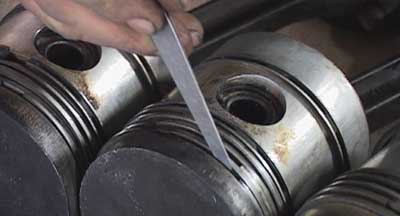Want to check out our tractor maintenance videos? Click here to see what we've got!
In the UK we’ve had two consecutive cold winters and the frost has blown core plugs from some engines which haven’t either been drained of coolant or had sufficient antifreeze concentrations. Owners who have had blown core plugs are lucky that this fail-safe has worked – they could have been dealing with a more serious (and expensive) cracked block. This highlights the need to prepare your tractor for winter.
How To Fit Core Plugs
There are different designs of core plug for different engines. The task is quite straight forward on the Perkins engines, as the plugs are simply hammered into position with a suitable drift and light hammering.
23C Engine
The design of the core plug and fitting method for the Standard 23C engine is somewhat different.
Here are the core plug fitting instructions…
On these engines the new core plugs are a convex shape (like a dish shape). You clean the hole out and put some sealant around the edge of the hole (something like ‘Instant Gasket’ or ‘Loctite Flange Sealant’). The sealant isn’t technically necessary (as eventually any leak would seal with rust), but it is better for an immediate seal.
Next get the new core plug and place the lip of the plug into the hole (so if you imagine something such as a breakfast bowl, the bottom of the bowl needs to be facing towards you to the outside of the engine block) and then using a suitably shaped wide punch you hit the centre of the core plug until it starts to flatten out. This expands the outer rim of the plug and makes a water tight seal. The plug needs to be nearly flat, but NOT flat. If you get it to the point of been flat then it will loose its grip and it will just fall out.
It is sometimes possible to re-use an old core plug if you are able to re-form the dish shape prior to fitting the plug.






Hi, the core plugs on my te20 diesel keep popping out when I’m driving. I have used the instant gasket sealing on them when they have, but then another one goes which doesn’t have the sealant. Just wondering where the excess pressure is coming from.
Thanks Graham